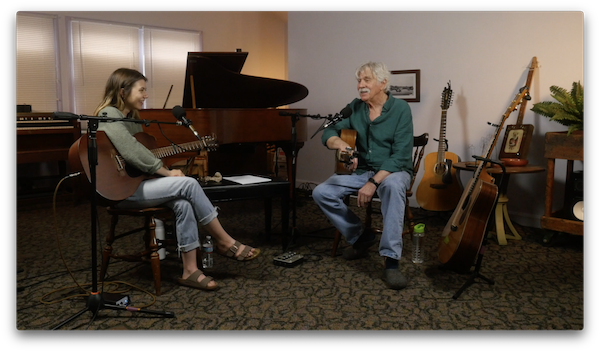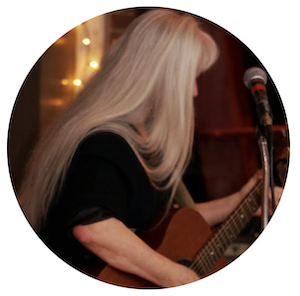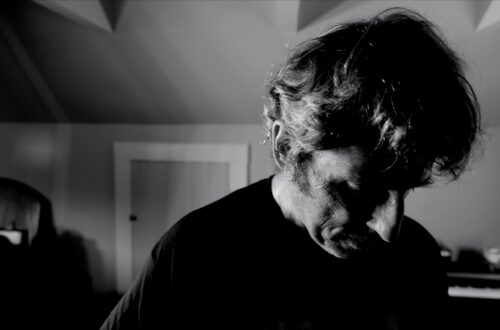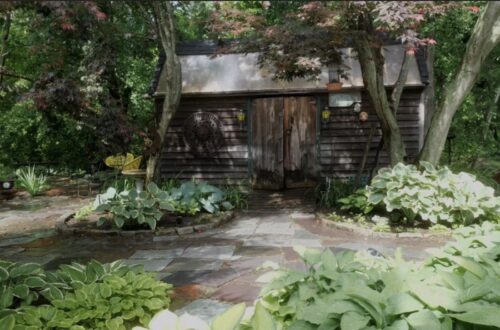
Just Another Day Shooting with 4 Cameras
I had a recent location shoot that I did by myself. It was four cameras, four mics and two people. I’ve done these before and I take some pride in the fact that not many people can set up that kind of production by themselves. I’ll describe how I go about it but before I get too deep into it I’ll say that I would have benefited from having my friend and production partner Frank Coakley with me. He was away that day so I Rambo’ed along and did it myself.
The shoot was for Tom Rush’s Patreon subscription program called “Rockport Sundays”. I’ve been shooting and editing this for 2 and a half years now. The production has grown and I have also. When we started I had 2 Panasonic GH-4s and another Panasonic HC-X1. But the X1 didn’t match too well with the GH-4s so I didn’t use it much. Later on I purchased a Panasonic S-5 because it had a full frame sensor and would match the GH-4s with their 4/3 sensors. The S-5 came with a 20-60mm lens f4.5. That is a nice lens but 4.5 doesn’t give me the nice soft out of focus background you can get with a faster lens. So I bought a 50mm prime lens made by Sigma. That lens is super fast at f1.4. I can set the camera 8 feet away from the subject and get the background very soft. In fact it can be too soft so I usually set it at 1.8. In fact I liked it so much I bought a second one. Now on the shoot I have one GH-4 set as the wide shot, one S-5 on Tom and one S-5 on the guest. The second GH-4 has a lens that is equivalent to 80mm and I use that to go back and forth between whoever is playing and singing. I set the clocks on each camera to the same time and then set the Time Code on each to “Time of Day”. It isn’t frame accurate but that helps later on in the editing when I sync the cameras up.
When Frank is with me we use a vocal mic and a guitar mic plus all the guitars have pickups so we use a direct box on each to take a clean feed. Basic set up is 6 audio feeds. On the shoot the other day I used only the vocal mics and the direct feeds. Running 4 cameras and monitoring 6 audio channels is too much.
We have lights that live in Tom’s studio so they are half set up each time we record. I have to arrange them based on if there is a guest or not. I use two soft boxes about 8 feet away from the person and the light is raised to approx. 8 feet as well to lessen the shadows on the wall. Each fixture has four bulbs that are daylight balanced at 6000K (daylight).
On this day Tom’s guest was Hayley Reardon. The objective is to record 3 sessions that consist of each person performing one song and having conversation before and after. The plan is to make videos that are approximately 15 mins long. Other guests we’ve had have been Tom’s former guitarist Trevor Veitch, Jonathan Edwards, Tom Paxton, Guy Davis, Monica Rizzio, Matt Nakoa and others. Many times it is just Tom alone.
To set up the cameras so they all match is a step by step process. The things that I need to do are,
1. Set the white balance. I have a large white reflector I use that has to be in the light that will be on the performer. I set cameras 1 (wide shot) and 2 (Tom) with the white card in his seat and then move the card over to the guest’s seat and white balance their camera and the 4th camera that I’ll be moving back and forth.
2. Set the exposure. Once the lighting has been set the the fixtures are each the same distance from the subject I set the exposure on the camera. With the lights I have and the fast lenses on the S-5s I have to shoot at an ISO of 100. That is pretty low but it allows me to open the aperture to f1.8 or 1.6 to get the out of focus background. If I wanted to use and ISO of 800 I’d have to put ND (neutral density) filters on the lenses to block some light. I’d rather shoot at 100 ISO than add additional glass on the lens. In the camera there is a function called Zebras. I set the level at 70 IRE. When the exposure is at 70 IRE the image in the viewfinder gets horizontal slashes across it indicating that that area is at 70 IRE. Then I close down the iris 1/2 stop so the Zebras go away. If I see them a little here and there it’s OK. In general faces are at about 65-70 IRE. Of course they are many complexions and everyone is different. I go around to each camera and set them up the same. There is almost nothing worse than an overexposed shot. Unless it’s an out of focus shot.
3. Focus is critical. I focus the cameras initially and then check the focus as much as I can. The most important thing is to have the person’s eye in focus. The wide shot is more forgiving on focus but the other 3 cameras are critical. The two cameras that I use on the performers are focused just before we start shooting and the roving camera gets focused a lot. On that 4th camera I use a one time auto focus instead of a continuous auto focus. I set the shot, hit the focus button and I’m good until I move the camera. The 2 S-5s each have a 9” focus assist monitor that I set up to help me. One time, not long ago I noticed a blur in the image that I would never have seen if I had been just using the small LCD screen that is attached to the camera. It turned out to be a small fleck of dust on the sensor. I had to blow it off with this bulb thing I carry around for just this purpose. That fixed it. One time I was shooting in DC and it was extremely hot and humid. While changing lenses a bead of perspiration fell onto the sensor and ruined all the shots from that point on. I had to send the camera back to the manufacturer to get the sensor cleaned.
4. Audio levels. Whether it’s just me or if it’s Frank, we take each mic and each direct box and have them talk, sing and strum so we can set the levels. If necessary we err on the side of lower levels rather than worrying about someone raising their voice and getting into distortion. In addition once the levels are set we can put in a limiter in case of emergencies. There is almost nothing worse than distorted audio unless it’s over exposed video or an out of focus shot.
On this latest production where I was by myself everything went very well. Tom and Hayley were terrific as usual and out of all the things that could go wrong there were only a few.
1. When Tom switched guitars he shut off the direct box and I didn’t notice it right away because I was doing a few other things. When I looked at the audio recorder I noticed channel 2 had no input so I had to stop him half way through the song and turn the DI on.
2. Tom sometimes plays a slide style guitar using a kitchen knife as his slide and places the guitar on his lap. That makes the guitar’s sound hole point straight up at the vocal mic. If I had noticed this I could have repositioned the mic so it was more out of the way of the guitar sound. In the final mix it was not a problem however. It sounded great. I only had to add a minimum of sound from the DI. In fact I used the DI to get a small stereo effect on the guitar sound.
3. When I got the footage home and started to edit I realized that the light that I used for Tom was spilling on Hayley’s face a little more than I had wanted but it looked good. At least it wasn’t over exposed. There is nothing worse than that.
4. This last one wasn’t a problem but caused me some agita until I got home to check it. When we were done and I was shutting down I was unplugging the equipment and unplugged the audio recorder without shutting it off first. That is not a problem BUT I didn’t remember if I had stopped the recording first. If that had happened and the last take of the audio ( the whole 3rd video) was still in record mode when I pulled the plug I would have been SOL. The recording needs to write an end of file to the audio. As it turns out it was all good.
I find the whole process very rewarding. I feel good about my ability to keep all those balls in the air and have it all work out in the end. I find working with my friend Frank to be a very pleasant experience and we learn new technical things with each production that make us better. Working with Tom Rush for 2 and a half years now has been terrific. I was standing about 5 feet from him with my camera one time when he played “The Panama Limited”. I had an “out of body” experience. That song was a favorite of mine in the 1970’s and it was a thrill for me to hear it up close. And to work with Hayley was a treat. She is a great talent and a nice person to boot.




